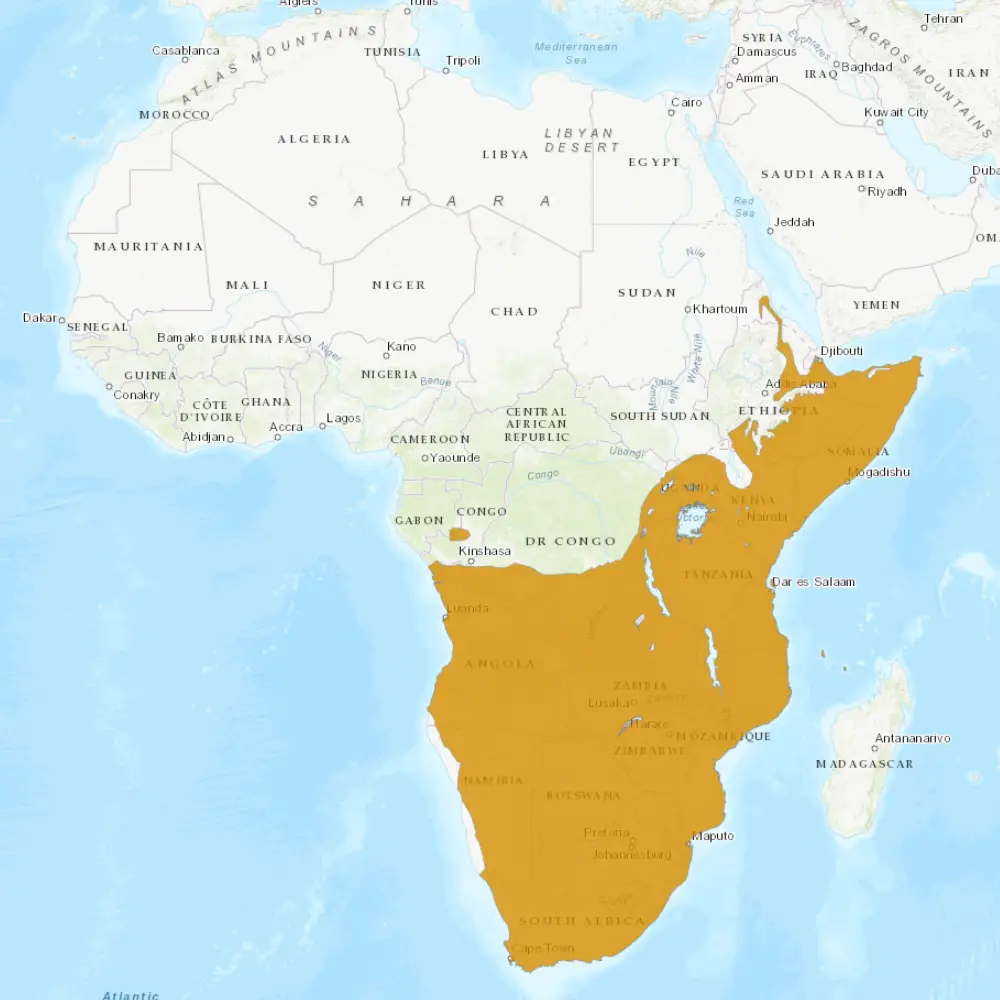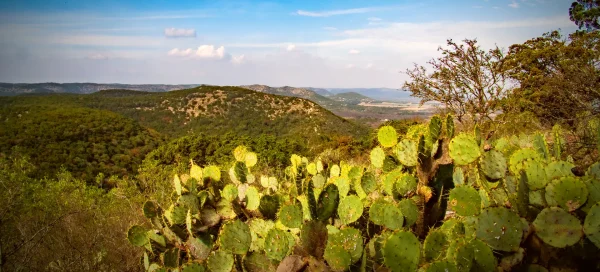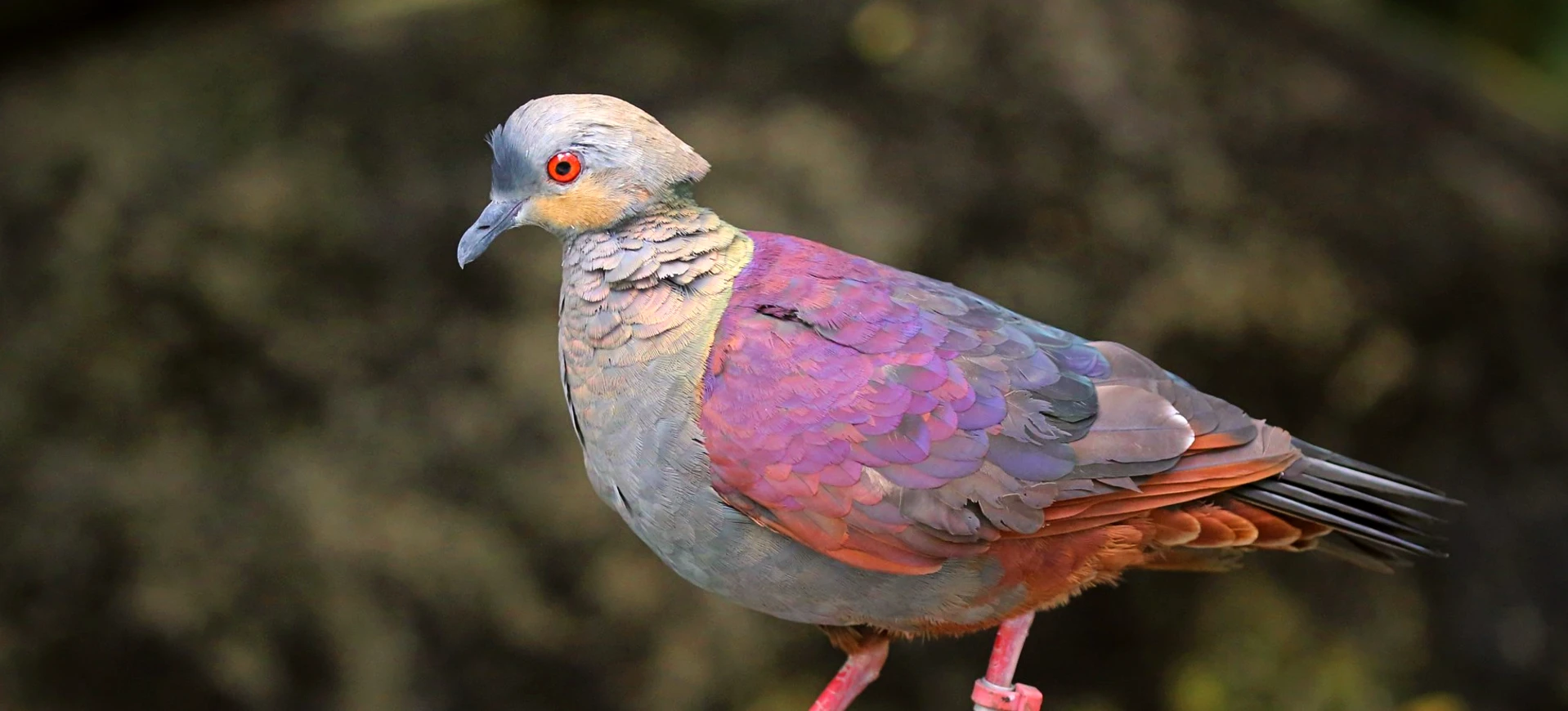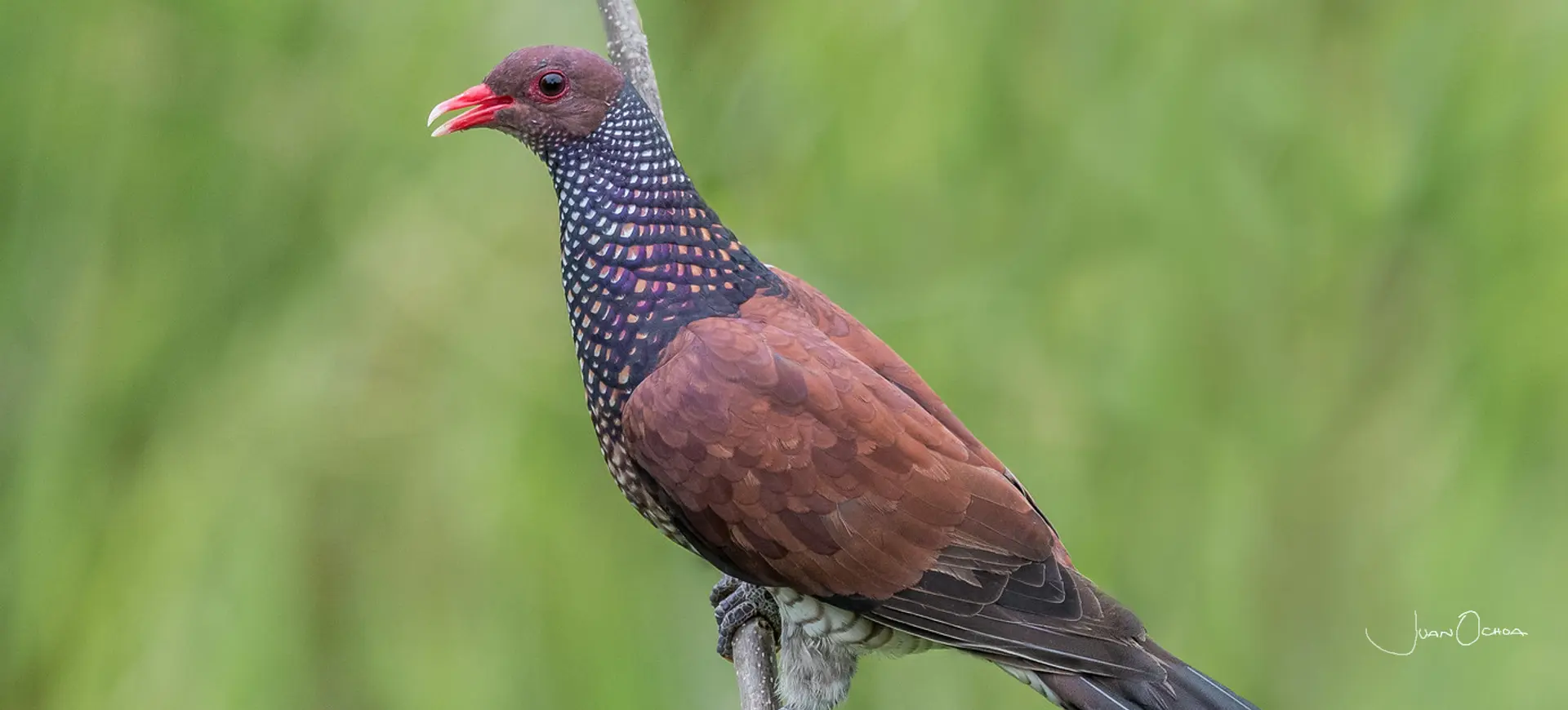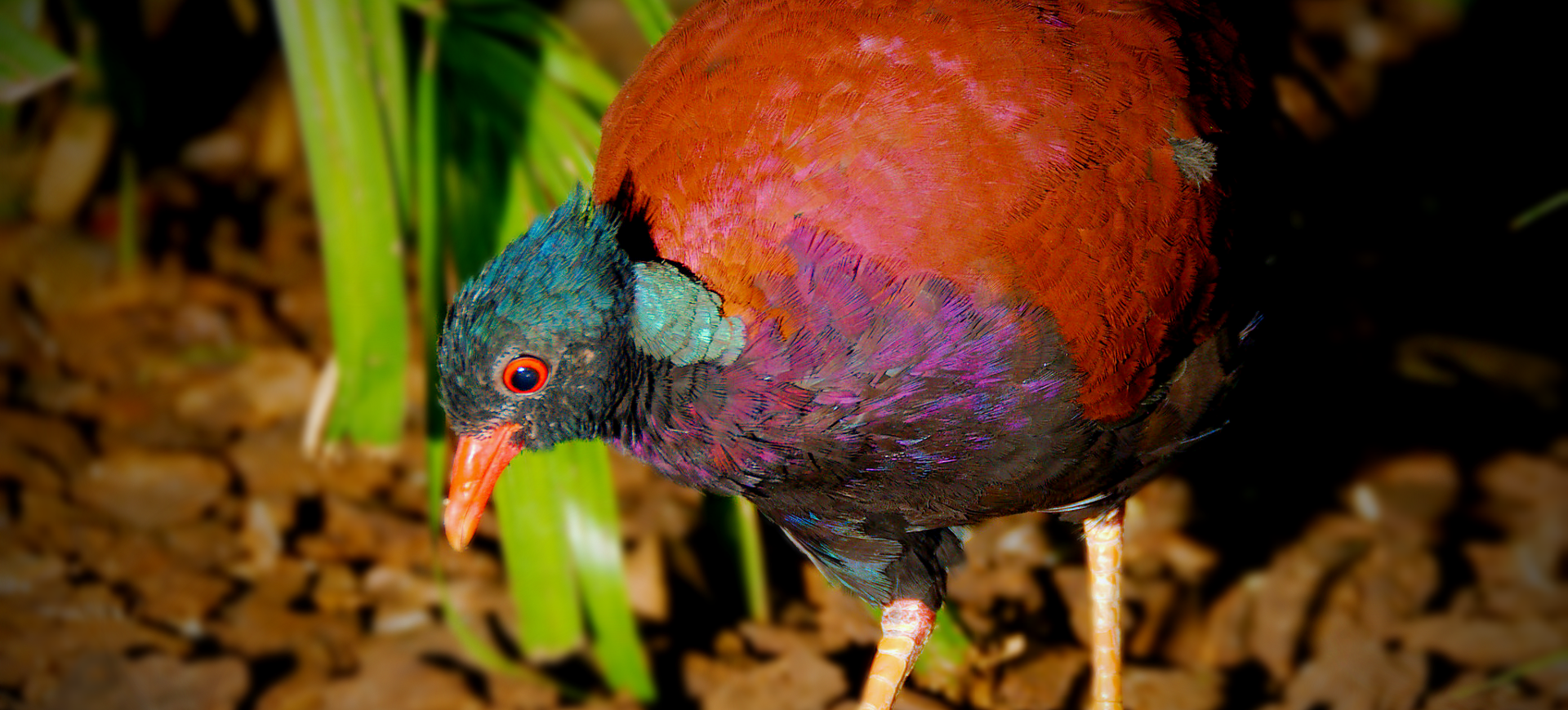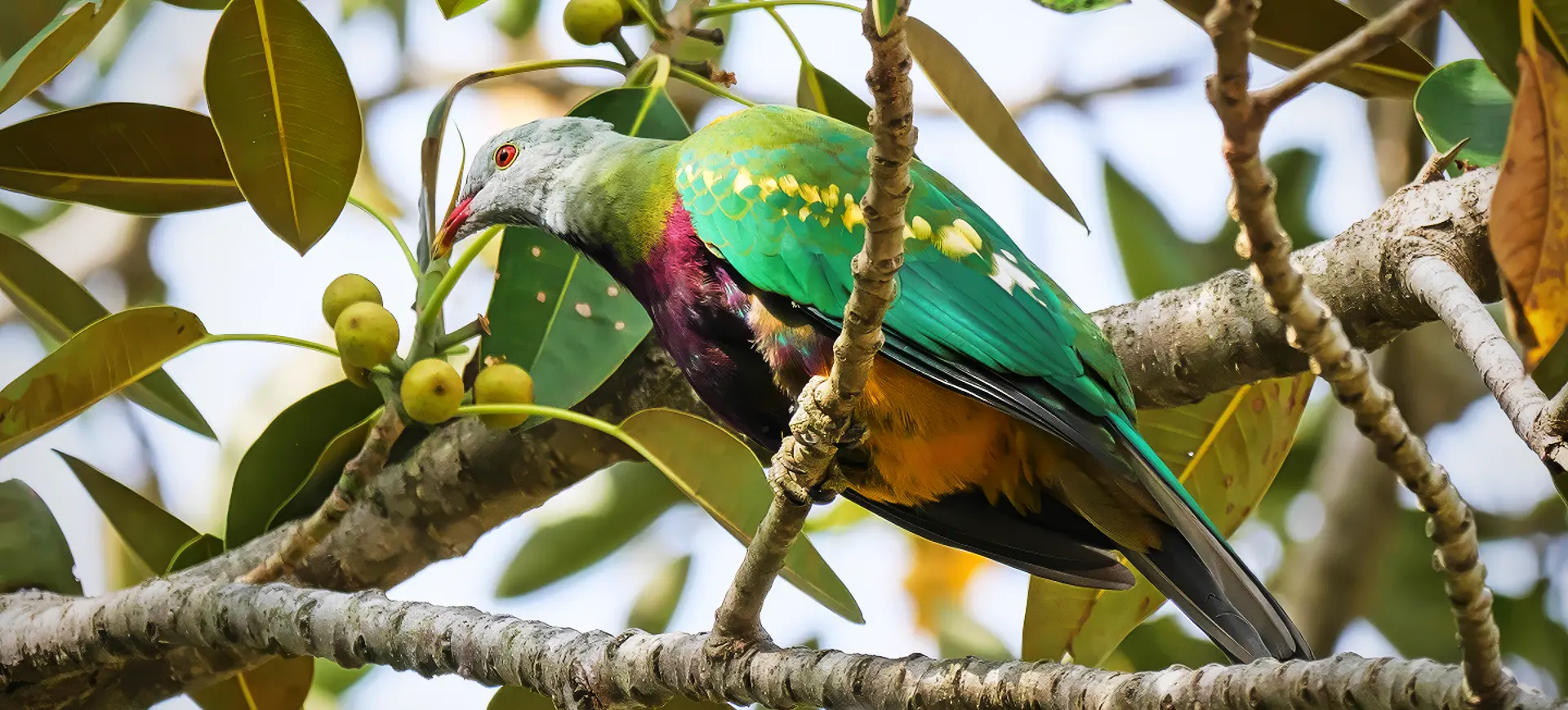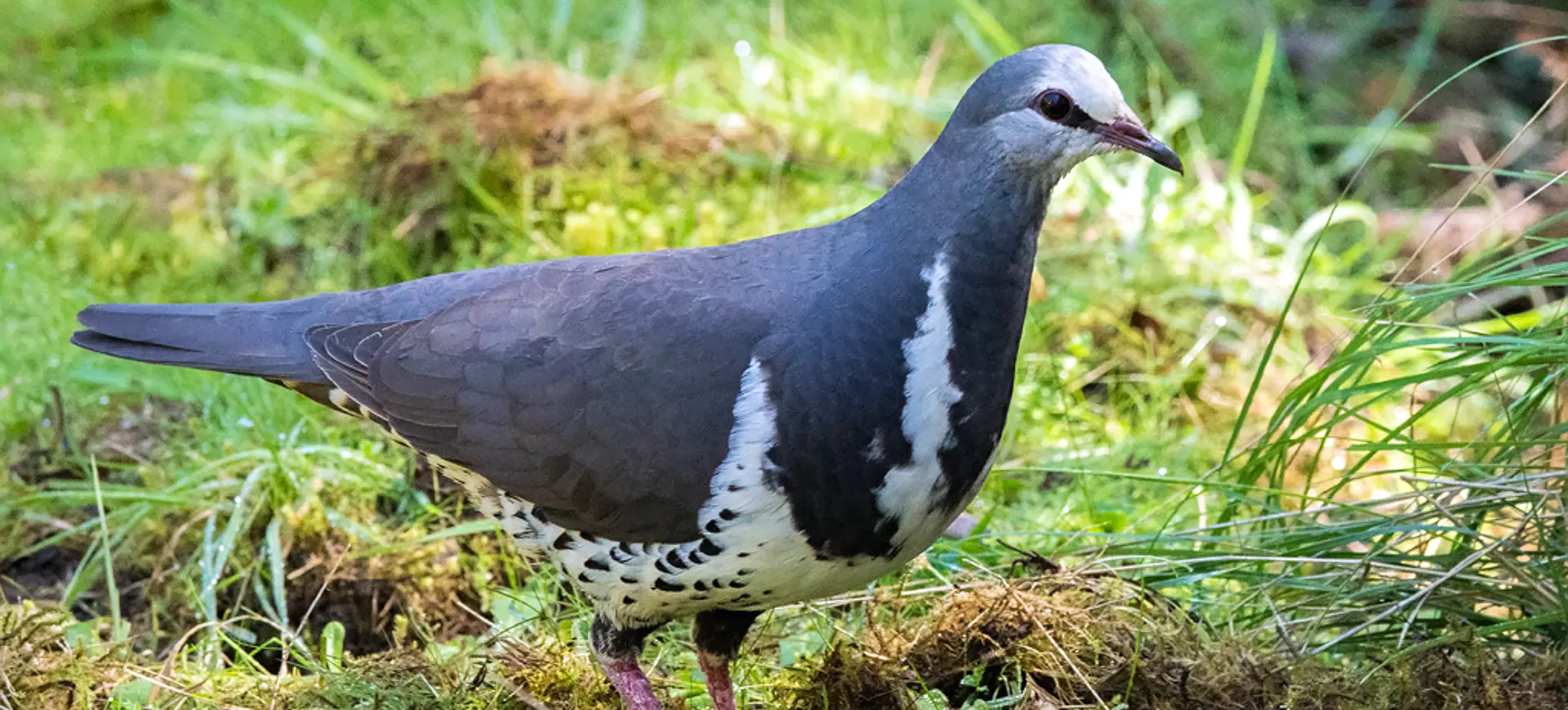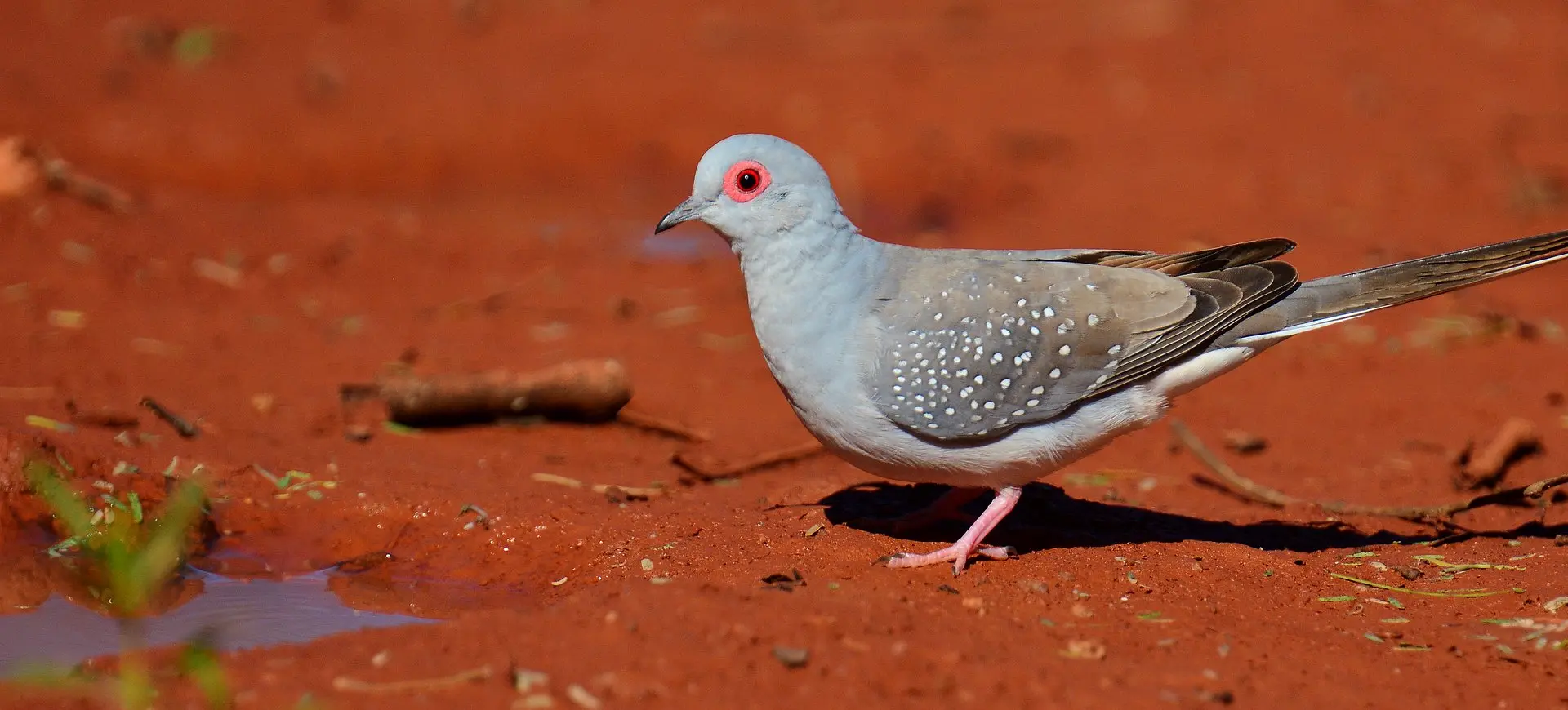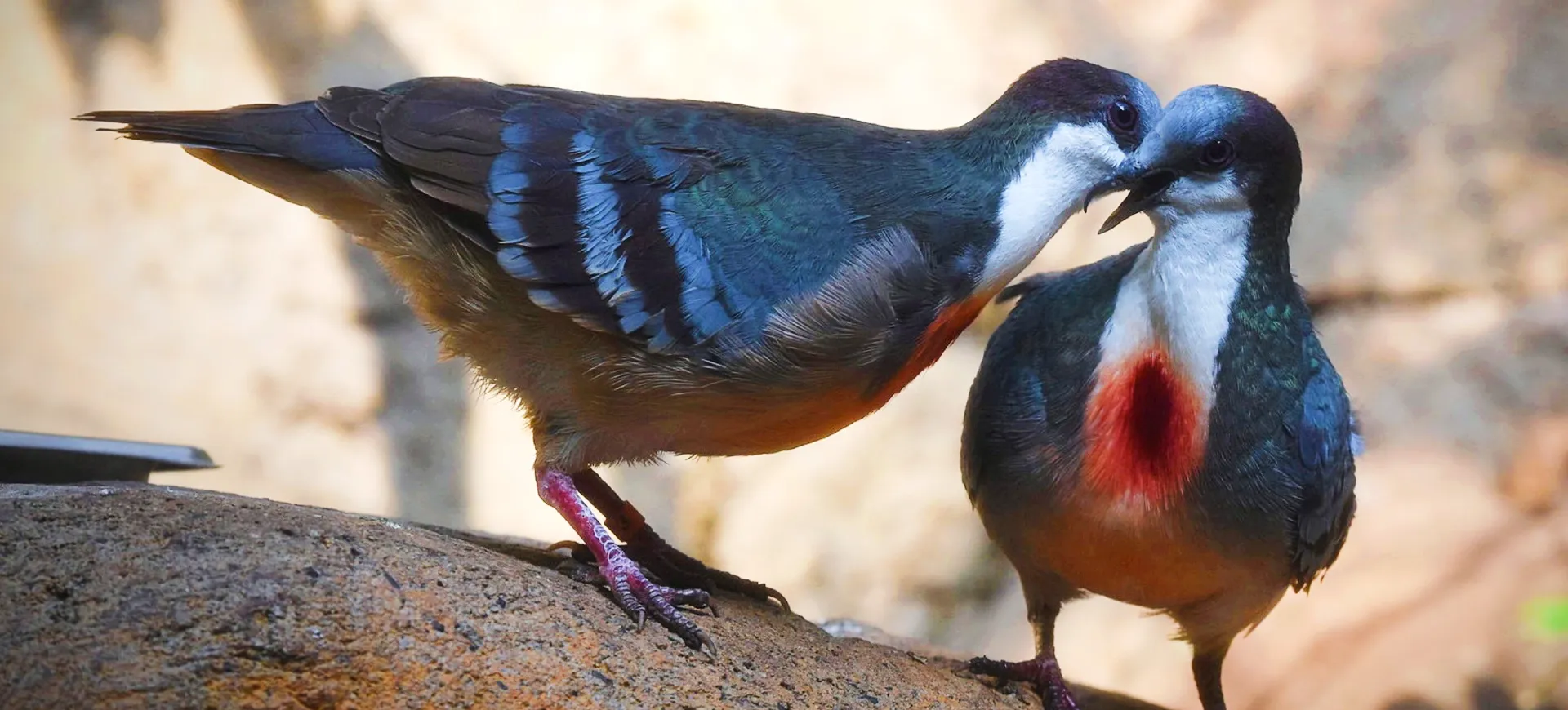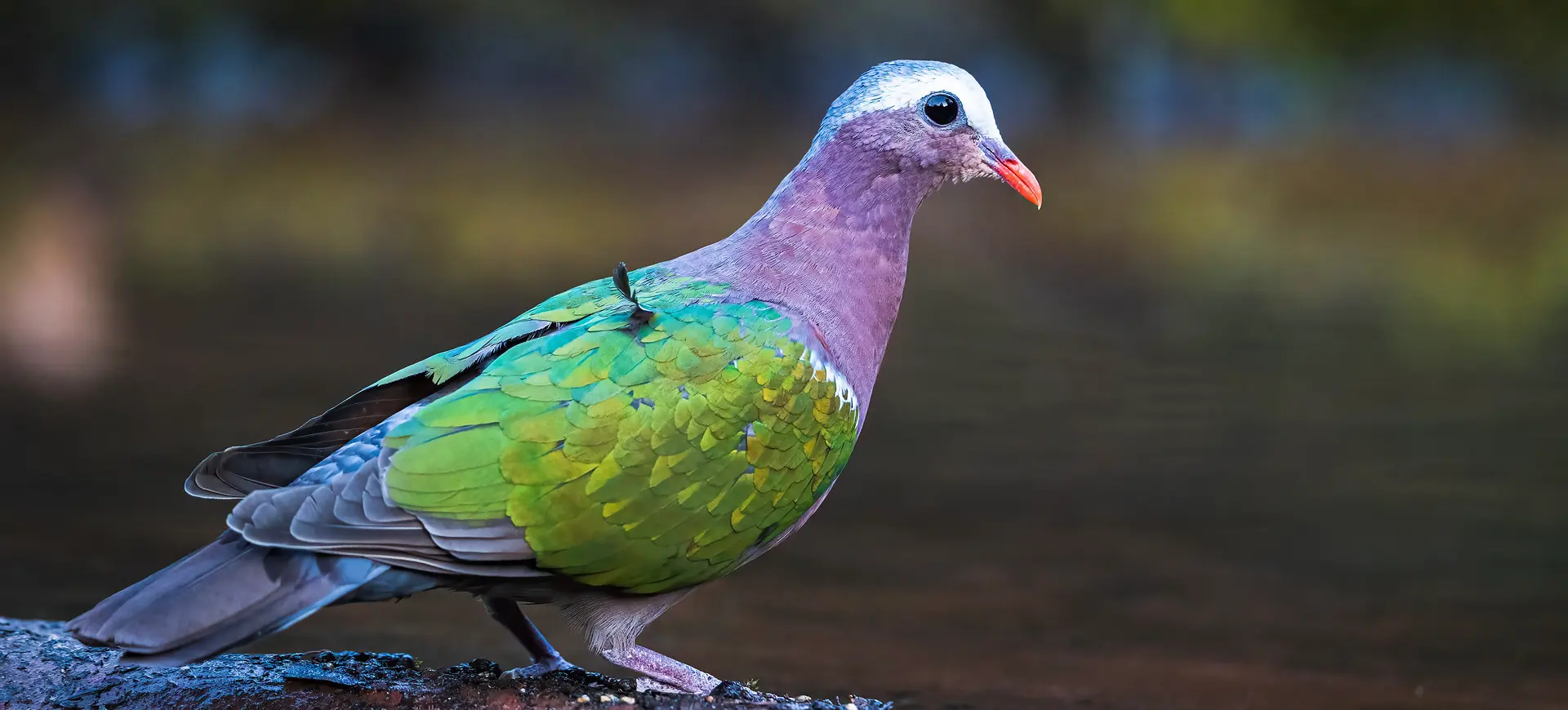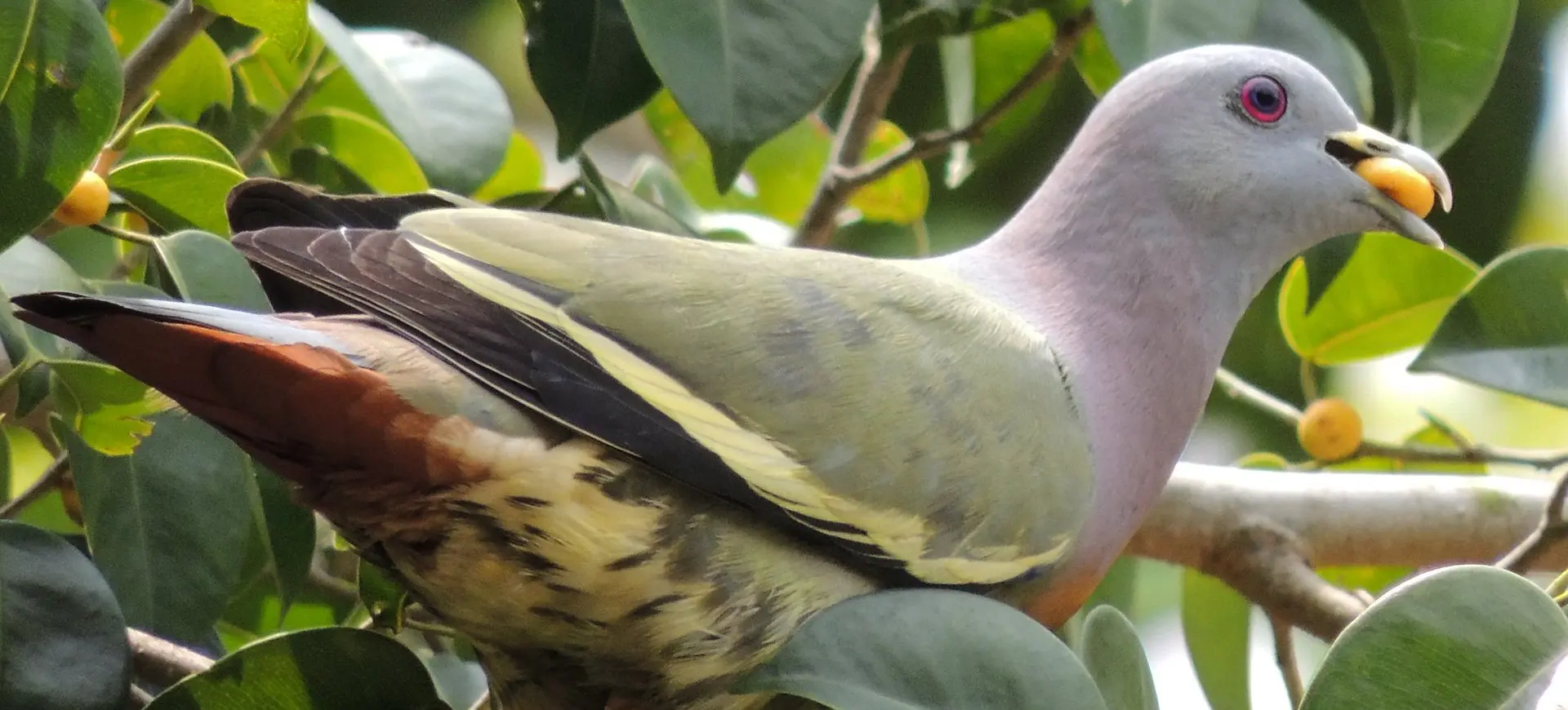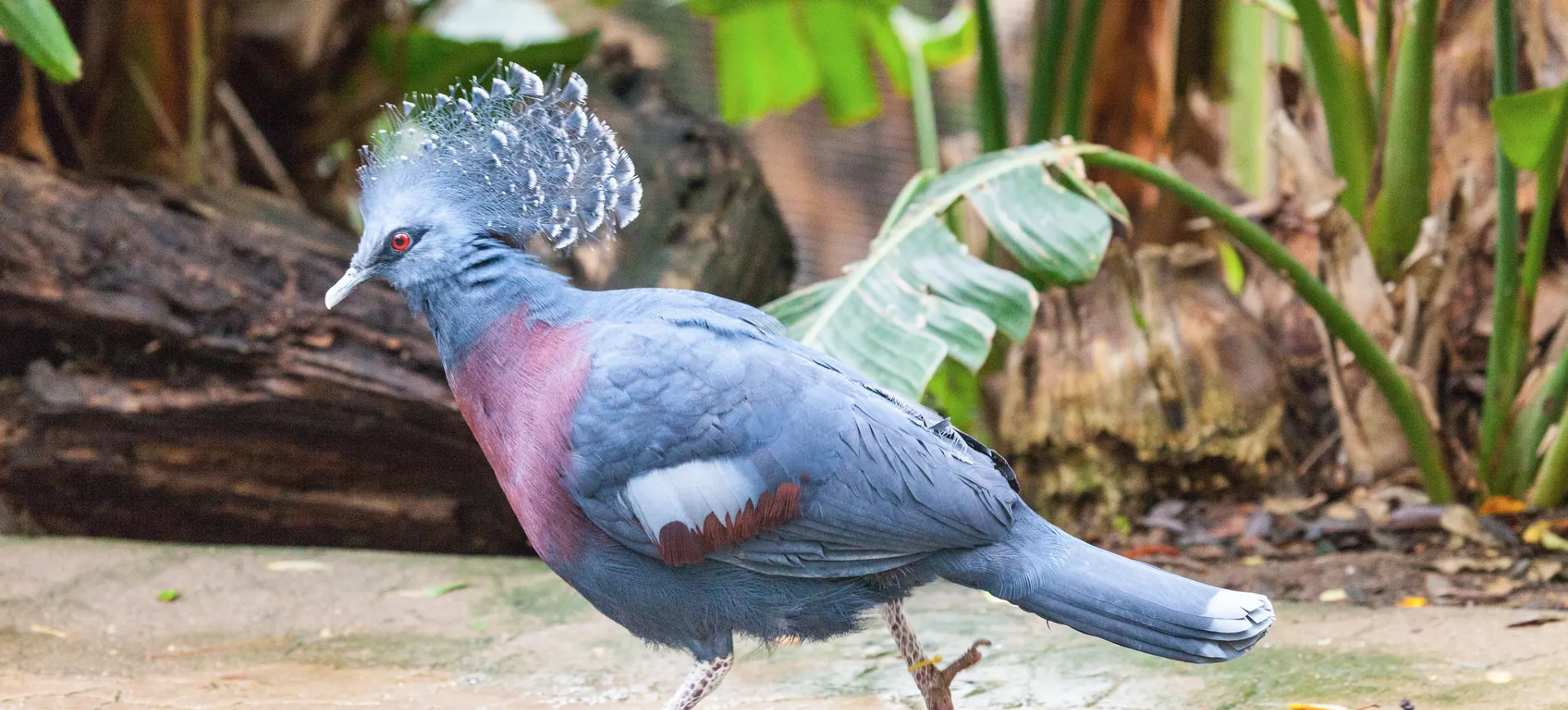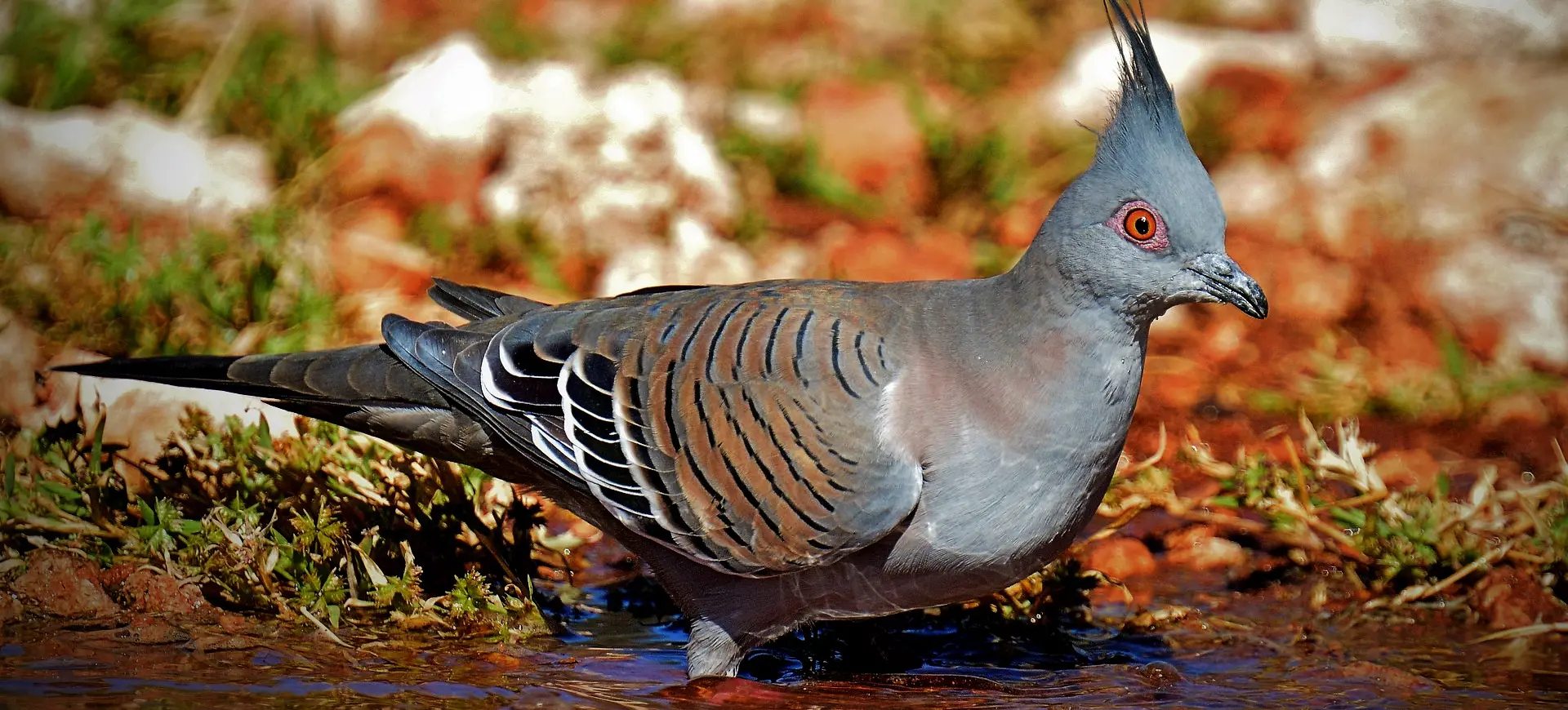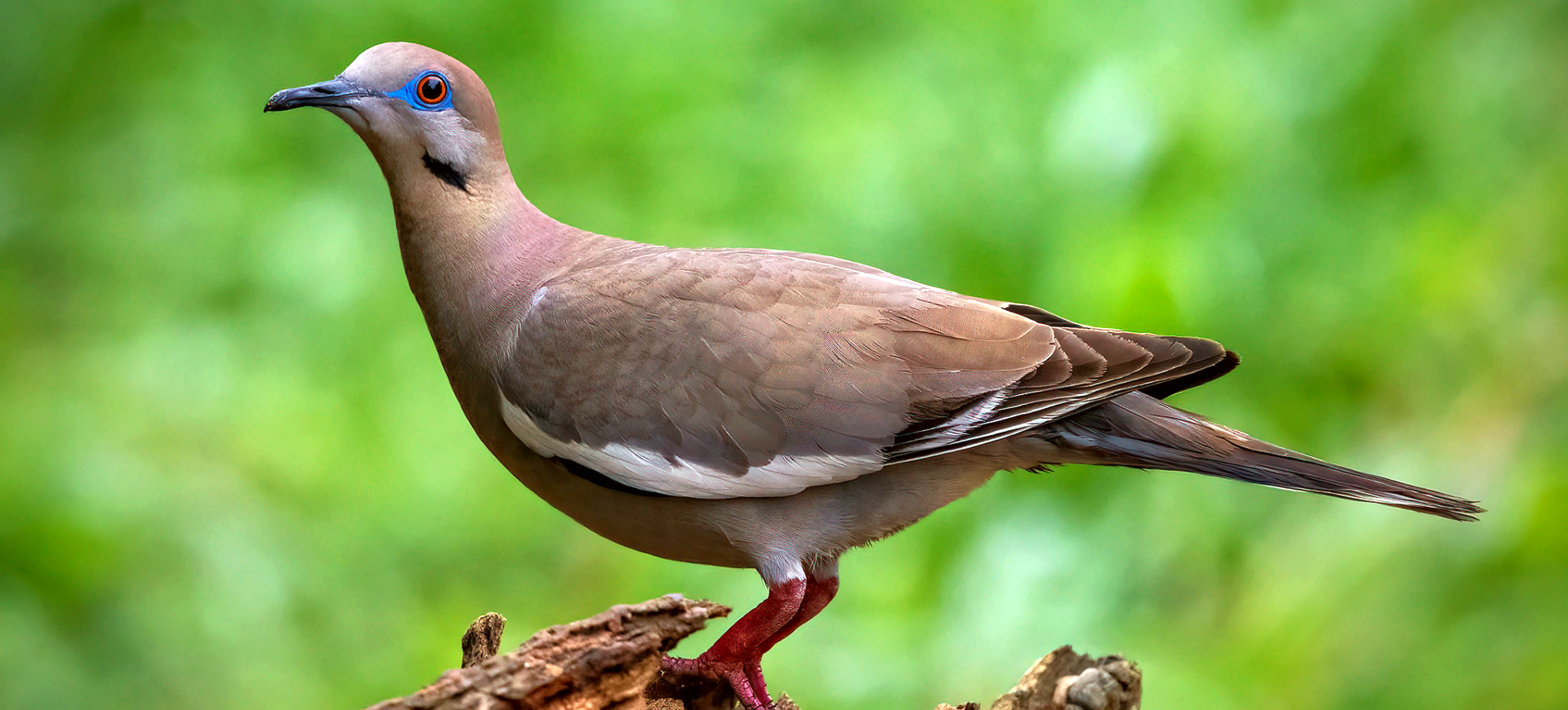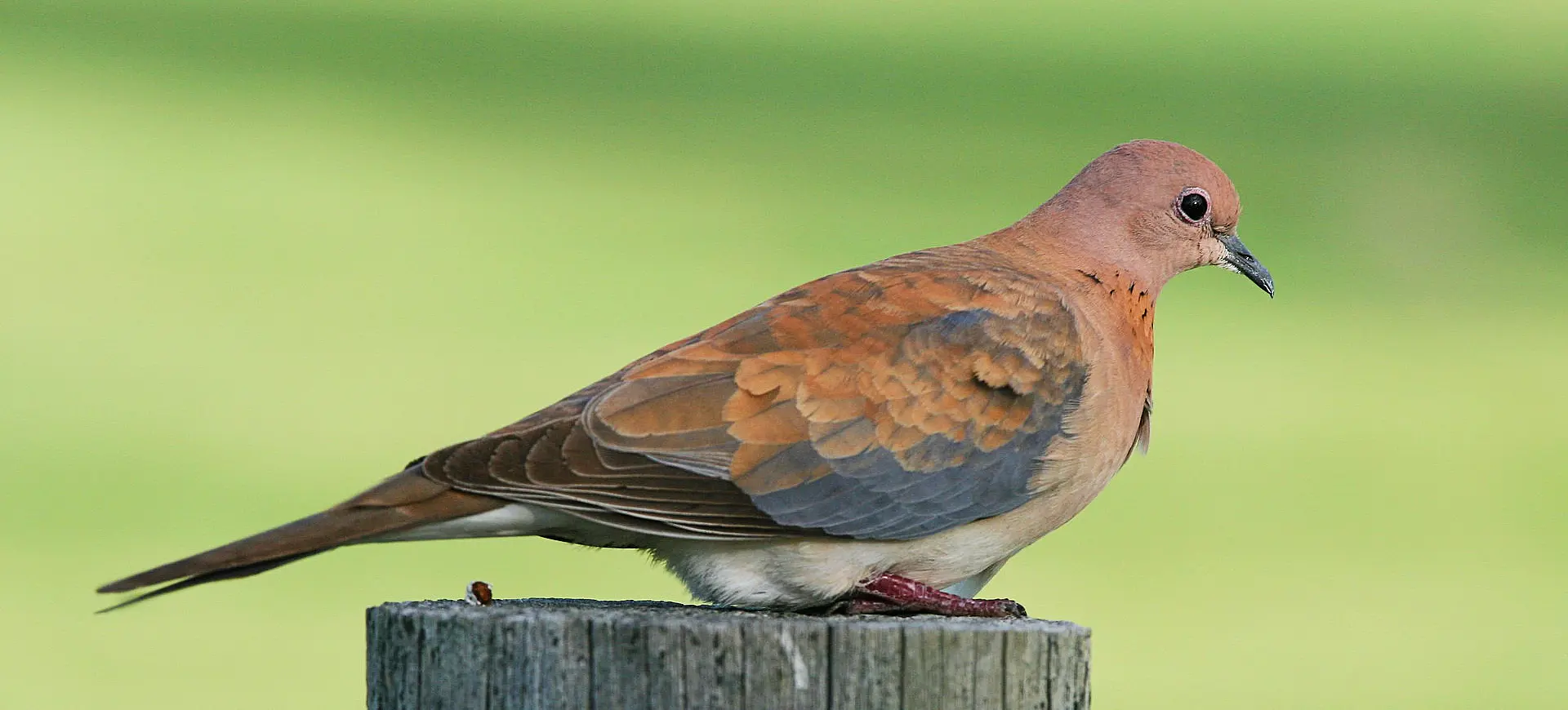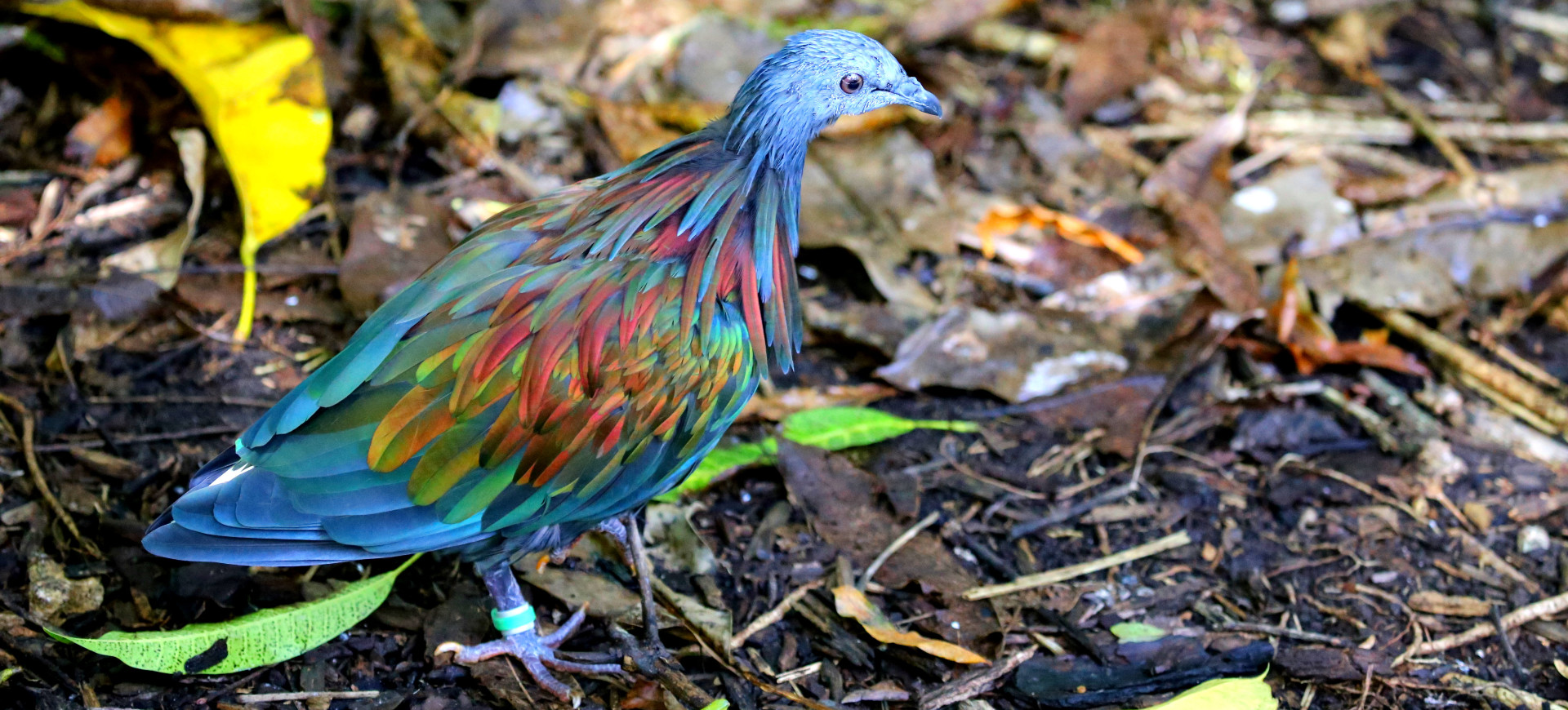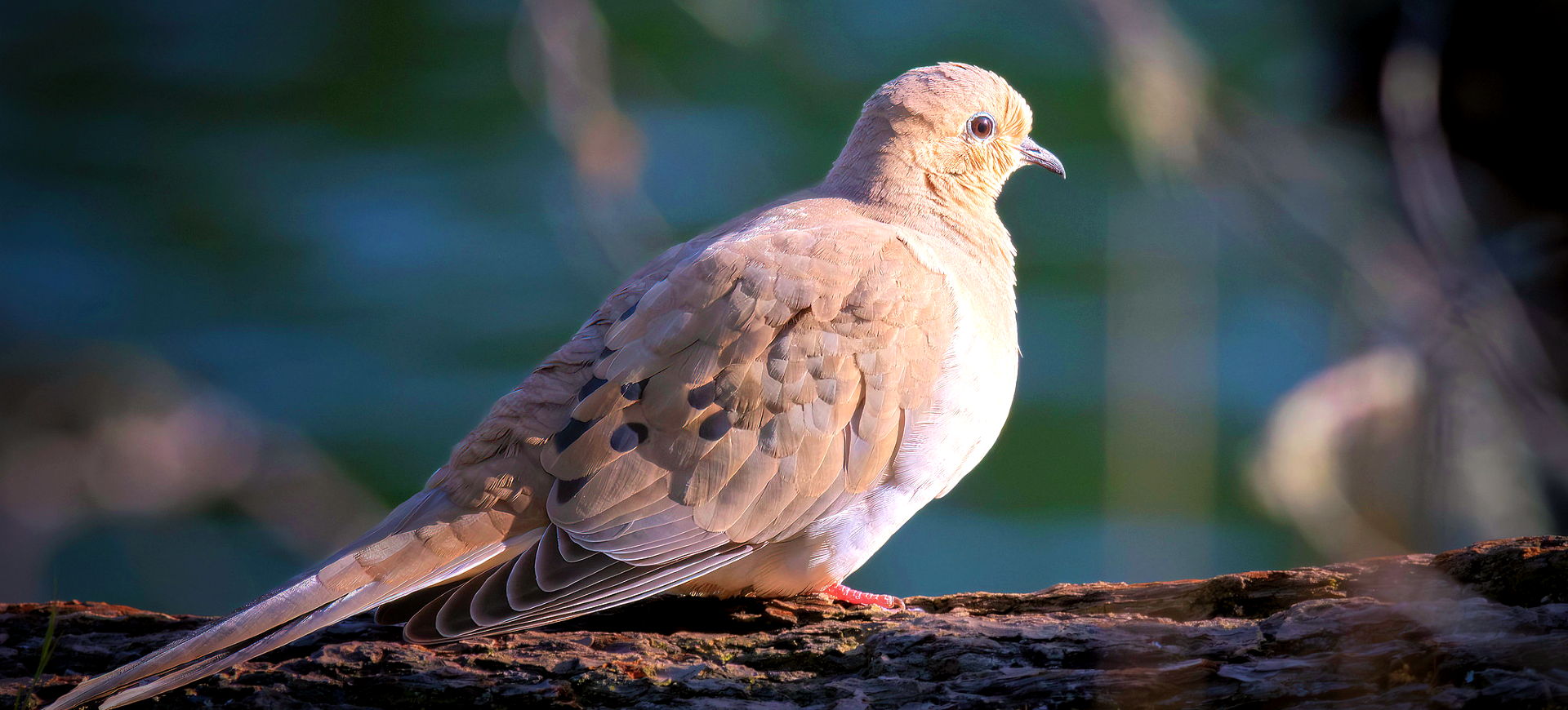Overview
The Ring-necked Dove, also known as the Cape Turtle Dove or the Half-collared Dove, is a widespread bird species belonging to the dove and pigeon family Columbidae. This bird is easily recognizable by its distinctive call, interpreted as a soothing “coo-oo.” It is a medium-sized dove, with a length ranging from 25 to 28 cm, predominantly grey, and is characterized by the black ring that encircles its neck, giving it its common name. The species is adaptable and can thrive in various environments, from dry, semi-desert areas to farmlands and urban gardens, showcasing its versatile nature and ability to coexist in altered landscapes.
The Ring-necked Dove is primarily granivorous, feeding on a wide range of seeds, but it also consumes fruits, small insects, and other plant materials. Its diet flexibility supports its survival in diverse habitats and contributes to its widespread distribution across its native range. These doves are known for their strong pair bonds, often seen in pairs throughout the year, signaling a monogamous mating system. The species plays a significant role in its ecosystem by acting as a seed disperser, aiding in the regeneration of plant life.
Notably, the Ring-necked Dove exhibits a remarkable ability to find water, enabling it to inhabit arid regions where water sources are scarce. It has a rapid, direct flight and is capable of long-distance movements, which are crucial for finding food and water in its often harsh habitats. The species’ resilience and adaptability have made it a common sight, with its pleasant cooing and familiar background sound in its range.
Taxonomy
Kingdom
Phylum
Class
Order
Family
Genus
Species
Sub Species
Type
Current distribution:
The Ring-necked Dove has a broad distribution across Africa, exhibiting a continuous presence throughout much of the continent. It is commonly found in countries south of the Sahara and has a particularly dense population in regions such as South Africa, Zimbabwe, and Namibia. The species' adaptability has allowed it to colonize a wide array of habitats, from rural to urban areas, making it one of Africa's most widespread and familiar doves.
Urbanization and agricultural expansion have provided new habitats for the Ring-necked Dove, increasing its population in these areas. Despite the pressures of habitat loss in some regions, the species has shown remarkable resilience, often benefiting from the altered landscapes created by human activity. Its presence in diverse habitats and broad geographical range is a testament to its adaptability and ecological success.
Physical Description:
The Ring-necked Dove is characterized by its soft, grey plumage, darker flight feathers, and a distinctive black band across the nape, which is more pronounced in males than females. Its eyes are dark with a red orbital ring, and its legs and feet are reddish, adding to its distinct appearance. Adults are about 25 to 28 cm long, displaying a slender build typical of doves. The underparts are lighter, often pale grey, contrasting with the darker back and wings.
This species does not exhibit sexual dimorphism in size, with males and females sharing similar physical dimensions. However, subtle differences in color intensity and neck ring visibility can be observed. Juveniles lack the characteristic neck ring and have a more uniform coloration, gradually developing as they mature. The streamlined body and powerful wings of the Ring-necked Dove facilitate efficient flight, essential for their migratory behavior and daily activities.

Lifespan: Wild: ~15 years || Captivity: ~20 years

Weight: Male: 5.3-6.7 oz (150-190 g) || Female: 5.3-6.7 oz (150-190 g)

Length: Male & Female: 9.8-11 in (25-28 cm)

Wingspan: Male & Female: 17.7-20.5 in (45-52 cm)

Top Speed: 35 mph (56 km/h)
Characteristic:
Native Habitat:
The Ring-necked Dove is native to Africa. Its range extends from the Sahara’s southern edge to South Africa and encompasses a variety of habitats. It thrives in semi-desert regions, savannas, open woodlands, and grasslands, demonstrating high adaptability to different environmental conditions. The species is also commonly found in agricultural and urban settings, where it has successfully integrated into the landscape.
Its ability to inhabit a wide range of altitudes, from sea level up to 3000 meters, underscores its versatile nature. The Ring-necked Dove prefers areas where water is accessible. Still, it can also survive in relatively dry environments thanks to its efficient water conservation strategies and the ability to utilize temporary water sources.
Biomes:
Biogeographical Realms:
Continents:
Diet:
Diet & Feeding Habits:
The Ring-necked Dove primarily feeds on various seeds, demonstrating a preference for grasses, grains, and, occasionally, fallen fruits. This diet is supplemented with small insects, snails, and other small invertebrates, especially during the breeding season when nutritional needs increase. Its feeding behavior is adaptable, often seen foraging on the ground in open areas or amidst vegetation, where it can take advantage of the seeds and insects hidden beneath the foliage.
In urban environments, the Ring-necked Dove has adapted to feeding on bird feeders and discarded food, showcasing its opportunistic feeding habits. It requires regular access to water and is often observed visiting waterholes in groups, especially in arid regions. The bird’s strong beak is well-suited for cracking open seeds, constituting most of its diet. Seasonal variations in food availability lead to changes in feeding locations, with the species capable of traveling considerable distances to find suitable feeding grounds.
Mating Behavior:
Mating Description:
Ring-necked Doves are monogamous, forming strong pair bonds often maintained throughout the year. Courtship involves a series of elaborate displays by the male, including cooing calls, bowing, and aerial displays to attract a female. Nesting sites are typically chosen by the female, with both partners participating in constructing the nest, a simple platform made of twigs and leaves.
The female usually lays two white eggs, which both parents incubate over about 14 days. The chicks, known as squabs, are altricial at birth, meaning they are born blind and featherless, requiring significant parental care. They grow quickly and are fed on “crop milk,” a nutrient-rich secretion produced by the parents. Fledging occurs approximately 16 to 18 days after hatching, with juveniles becoming independent shortly after that.
Reproduction Season:
Birth Type:
Pregnancy Duration:
Female Name:
Male Name:
Baby Name:
Social Structure Description:
The Ring-necked Dove exhibits a flexible social structure, with individuals often seen alone, in pairs, or larger flocks, especially near water sources or abundant food supplies. Pair bonds are strong, with monogamous pairs remaining together throughout the year. Social interactions within flocks are generally peaceful, with the doves displaying cooperative behaviors such as communal roosting and alerting each other to predators.
In urban environments, the Ring-necked Dove adapts well to the presence of humans and other bird species, often sharing feeding sites and water sources. The species’ social dynamics are influenced by the availability of resources, with higher densities of doves observed in areas where food and water are readily available. This adaptability in social structure helps the Ring-necked Dove thrive in a wide range of habitats.
Groups:
Conservation Status:
Population Trend:
The Ring-necked Dove is considered Least Concern by the IUCN Red List, indicating a stable or increasing population across its extensive range. This species benefits from a high reproductive rate and adaptability to various habitats, including those altered by human activity. Its ability to thrive in rural and urban environments has contributed to its widespread presence and abundance in many parts of Africa.
Despite its success, local populations can be affected by habitat destruction, predation, and extreme weather events. However, the species’ generalist nature and flexible diet have often enabled it to overcome these challenges. Due to its status, conservation efforts are not specifically targeted towards this species but benefit from broader environmental conservation measures that protect habitats and biodiversity.
Population Threats:
The primary threats to the Ring-necked Dove include habitat loss and degradation, particularly in areas where intensive agriculture and urbanization eliminate suitable habitats. Predation by domestic cats and birds of prey also poses a risk, especially in urban areas where natural predators are scarce. Additionally, the use of pesticides in agriculture can reduce food availability and lead to poisoning if the doves consume contaminated insects or seeds.
Climate change poses a long-term threat, potentially altering the distribution of suitable habitats and affecting water availability. Despite these threats, the Ring-necked Dove’s adaptability and broad dietary preferences allow it to cope with changing environmental conditions better than many other species.
Conservation Efforts:
Conservation efforts for the Ring-necked Dove are generally focused on habitat protection and the conservation of biodiversity as a whole. Given its status as Least Concern, no specific conservation programs target this species. However, it indirectly benefits from wider conservation initiatives to preserve natural habitats and ecosystems.
Efforts to reduce pesticide use, protect water sources, and maintain green spaces in urban areas can help support the population of Ring-necked Doves and other urban wildlife. Public awareness campaigns that encourage bird-friendly practices, such as the use of non-toxic pest control methods and the provision of bird feeders and water baths, also contribute to the well-being of this species.
Additional Resources:
Fun Facts
- The Ring-necked Dove is known for its distinctive “coo-oo” call, which is often interpreted as “work harder” or “drink lager” in human language.
- Despite its name, the ring on the Ring-necked Dove’s neck is not always clearly visible, especially from a distance.
- These doves can drink water by sucking it up without needing to tilt their heads back, unlike many other bird species.
- The Ring-necked Dove is highly adaptable and can live near humans, making it a common sight in urban areas across Africa.
- They can rapidly breed, with pairs able to raise several broods of chicks within a year.
- The species plays a vital role in its ecosystem as a seed disperser, helping to promote plant growth and biodiversity.
- Ring-necked Doves have been observed using various materials for their nests, including twigs, leaves, and even man-made items in urban settings.
- Their ability to find water in arid environments demonstrates their survival skills in challenging conditions.
- The Ring-necked Dove’s flight is characterized by a whistling sound produced by the air passing over its wing feathers.
- In some cultures, the Ring-necked Dove symbolizes peace and love, similar to other dove species.


